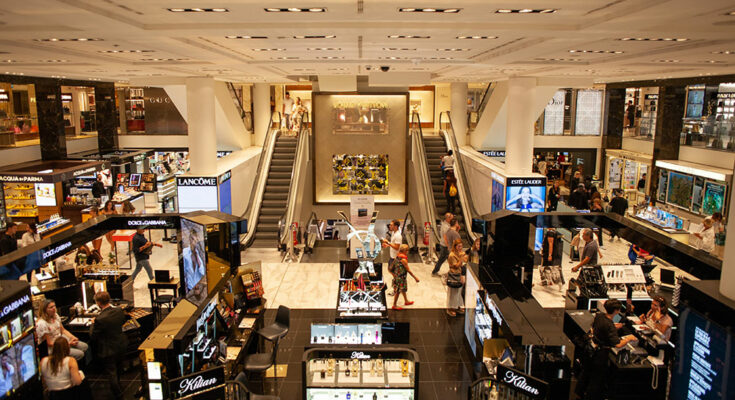Despite the rising popularity of online stores, Filipinos will continue to flock to shopping malls because these brick-and-mortar spaces are not just retail options, but an essential part of their everyday life as well. While most westerners regard shopping malls as mere places to shop, these commercial establishments are like community hubs in the Philippines where people gather for recreation, leisure, work, worship, and many other reasons. That’s why it’s hardly surprising that the mall industry continues to flourish, earning billions of pesos in revenues regardless of the economic climate.
Perhaps you’re wondering how shopping malls earned such an integral position in the lives of many. Or maybe you’d like to know how the mall culture affects Filipino values and culture. Either way, read on. This piece will discuss when the fascination of malls started as well as the roles and impact of malls in the lives and culture of Pinoys.
The Beginning of Mall Culture
Contrary to a common misconception, Filipinos’ love for shopping malls started long before the establishment of popular gargantuan supermalls in Manila. The Philippines’ first mall was Crystal Arcade, designed by architect Andres Luna de San Pedro, son of renowned artist Juan Luna, and erected in 1932 during the American occupation. This fancy crystal building was the first air-conditioned modern structure in the country. It featured art deco lines, a spacious lobby, curved stairways, and a play of light and shadow in the interior.
Crystal Arcade housed the Manila Stock Exchange then, along with offices, cafes, and shops where the elite would go. Andres planned it as a grand commercial center, a monument to consumption. It was a magical place where visitors could run away from unpleasant weather and daily troubles. Although it was destroyed in the Second World War, this architectural gem became the antecedent of modern malls. It also introduced the general idea of mall culture—a way of life focused on consumerism and materialism.
The Role of Philippine Malls
In the Philippines, shopping malls are modern-day plazas where people socialize, interact with others, and explore different activities, from shopping and dining to getting medical help and completing government transactions. They have become the go-to places for leisure and recreation, offering numerous delightful and affordable options, such as movie theaters, bowling lanes, and mini amusement parks. These mall attractions are a hit because not all areas have suitable public parks, playgrounds, and green open spaces.
Aside from providing access to leisure, entertainment, and different types of private and government services, malls also serve as places of refuge from the tropical heat, like the Crystal Arcade of old. Filipinos flock to shopping malls for free air-conditioning to cool down and relax, especially during the hot summer months. During bad weather and calamities, several mall chains also open their doors to offer temporary shelters, parking areas, Wi-Fi, and charging stations at no cost to assist the community.
Shopping malls are also job providers. Mall developers are one of the leading employers in the country, employing millions of Filipinos and offering numerous job opportunities. Malls also play a crucial role in boosting economic growth. Aside from serving as one of the top taxpayers in different municipalities, mall developers also drive various businesses to set up shops where shopping centers are located.
That’s why in cities like Pasay, for example, you can find plenty of dining and leisure establishments as well as hotels near Mall of Asia. Perhaps this economic or transforming role of shopping malls is most apparent when you observe how their mere presence can lead to the urbanization of rural areas.
How Malls Affect the Filipino Culture
While the growth of commercial centers helps provide jobs, boosts the economy, and provides all sorts of conveniences, it has its downside. It has made Filipinos move towards a very consumerist culture. Instead of seeking happiness and finding satisfaction in meaningful pursuits and personal relationships, many are now focused on activities related to the consumption of goods.
The countless malls in various areas with a wide array of restaurants and shops market their goods as necessities, thus enticing people to splurge—even beyond their means. This materialistic culture drives Filipinos to consume, follow trends, and constantly search for new branded products and novel experiences to become happy and content—most of the time, to the point of excess. Unfortunately, excessive consumerism can become a drain on one’s personal finances and only provide short-term satisfaction as they get into a continuous cycle of acquiring material possessions.
Conclusion
Shopping malls offer numerous benefits that can’t be ignored. They boost the economy, generate jobs, and serve as community hubs where people can meet, relax, and experience various activities. They even help Filipinos during calamities. However, their presence and dominance are fostering an overly consumerist and materialistic culture. Some even spend beyond their means as they try to find meaning in buying and acquiring material goods.
It’s worth pointing out that the mall culture probably remains strong in the country, as there aren’t an abundance of well-maintained and quality parks, gardens, and other public spaces where Filipinos can gather, relax, and engage in alternatively productive activities.




